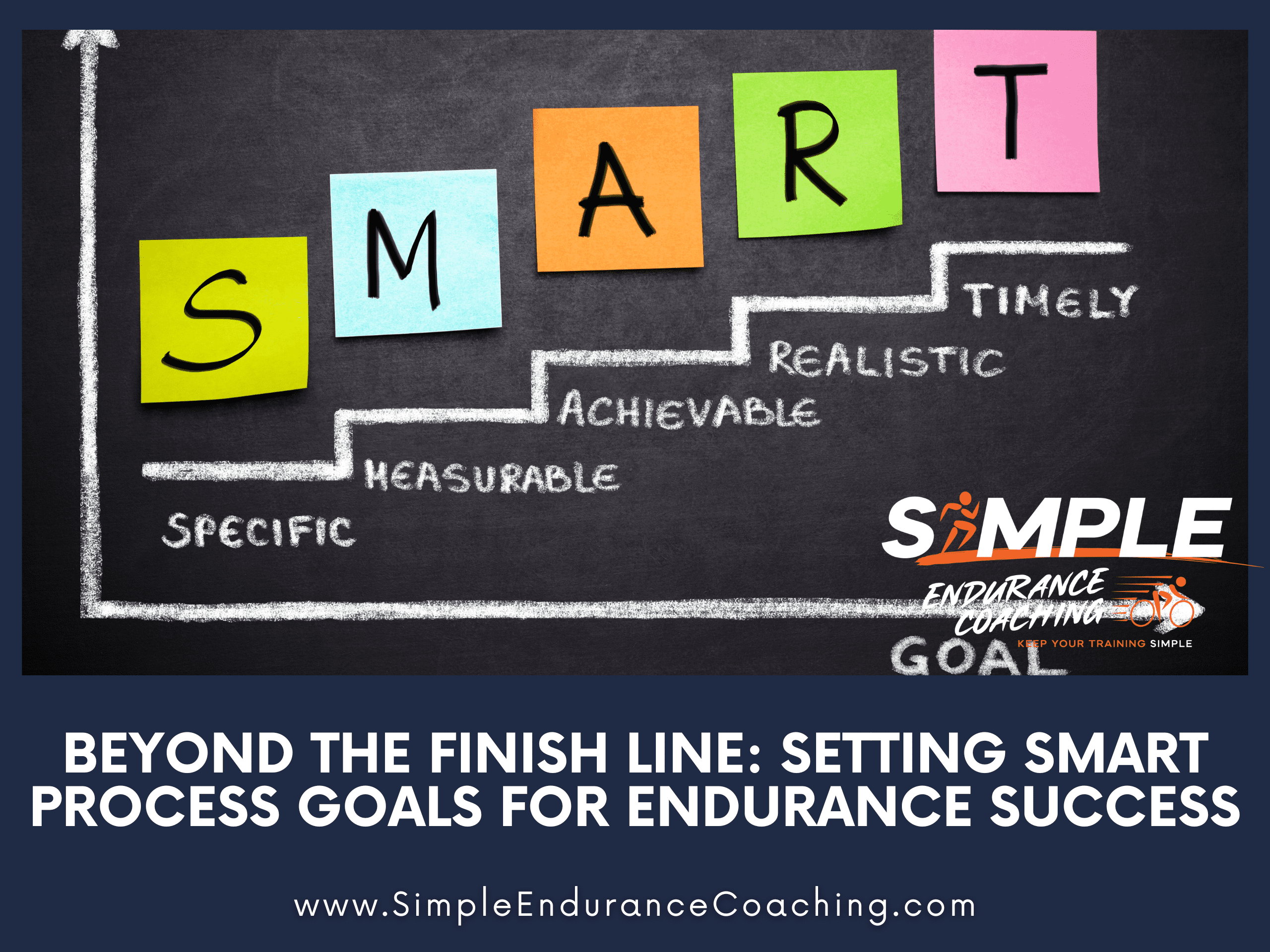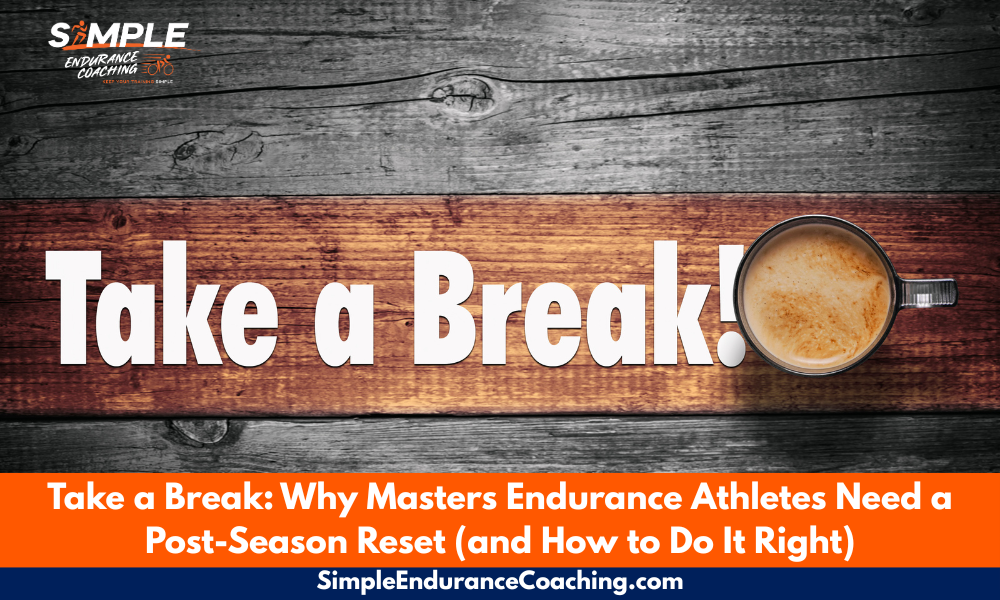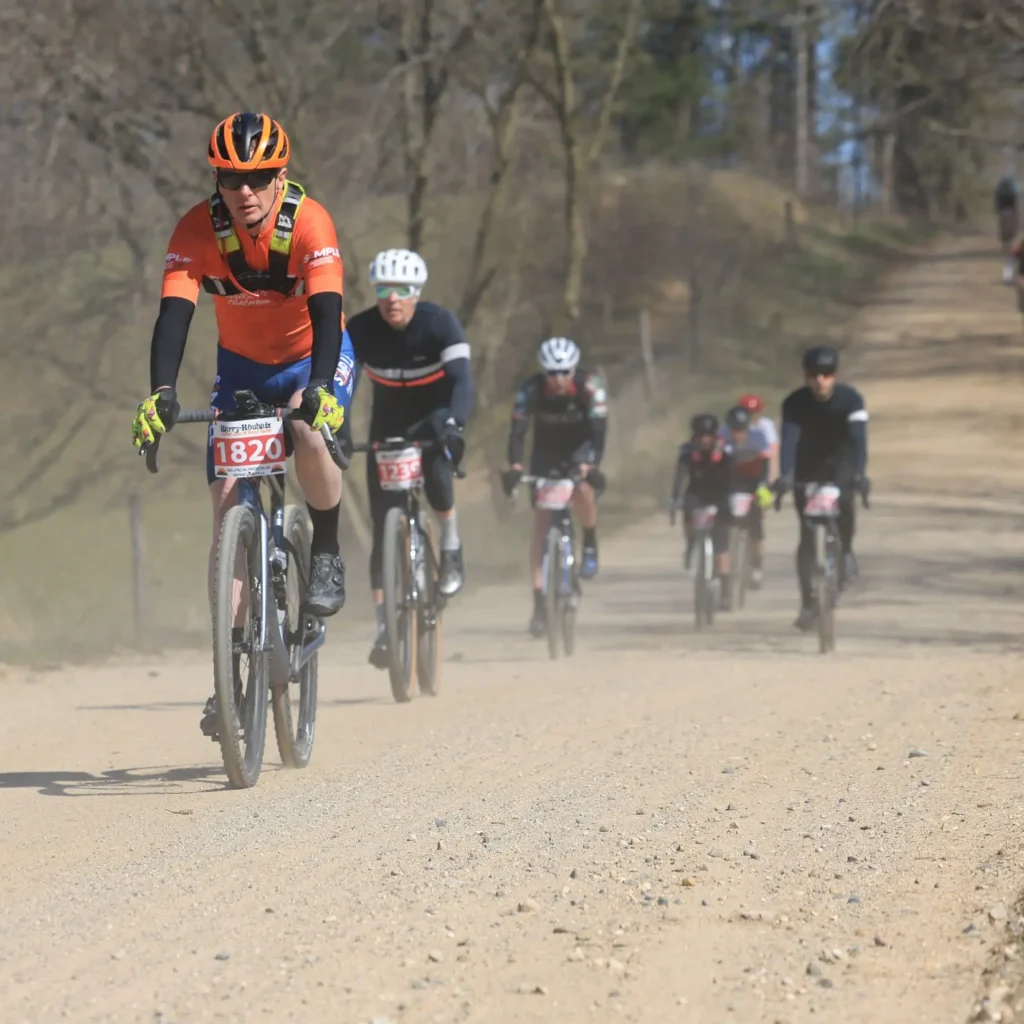Beyond the Finish Line: Setting Smart Process Goals for Endurance Success
We’re in the time of year when most athletes are done with their competitions and are thinking about next season.
I’ve already got a list of the gravel races I’m doing for most of 2024!
So I’m sending a goal sheet to each client, and then we’ll meet to talk through their goals so they can be healthy and fit throughout the year.
What’s most important, though, is not the actual final goal but the process goals they need to meet along the way.
That’s how runners, cyclists, and triathletes are going to be successful in reaching their training goals.

Process goals are steps toward your outcome goals
Process goals are the steps along the goal achievement path.
If you have a specific outcome goal of doing well at an event, what are the steps you need to take to reach that outcome goal.
Those process goals define what kind of training you need to do.
Let’s take an example with one of my junior athletes and walk through the steps of creating process goals.
She wants to podium in the LaCrosse Omnium, a three-day race in Wisconsin that features a steep hill climb time trial, a road race with rolling hills, and a downtown criterium.
So that is her overall goal: podiuming in the Omnium.
But how is she going to get there?
What skills and abilities does she need to reach that goal?
Those are her process goals.
Getting stronger is the first process goal
We’ll start with the first process goal: For her to do well in the omnium, she needs to be able to be strong enough to climb the hills.
That means we need to build her full-body strength as well as specifically her leg strength.
How will that happen?
We’ll work on her full-body strength through bodyweight strength training and yoga.
She doesn’t have access to a gym so we’ll create alternatives to doing heavy deadlifts.
She could lift a couch or her younger sister!
We’ll also include yoga strength work.
Big gear work will develop her leg strength
This winter, part of her endurance work will be learning to push a bigger gear.
We might get her to try some gravel races to work on her full-body strength and endurance.
Process goals are measurable with an end point
So her process goal for strength might be something like this:
- Do 15 goblet squats with a heavy household object by the end of March.
And with the interval work, her process goal would be something like: be able to push 115 watts at 40 rpm for 10 minutes by the end of March.
Each goal is something reasonable, measurable, and has an endpoint: By so and so date, I will be able to accomplish this particular goal.
Improving speed and power
She also needs to be able to be consistent speed in the races to be able to hang with the older girls.
That means a couple of process goals for her: She needs to do more threshold work to increase her FTP (Functional Threshold Power) or Critical Power.
And she also needs to do a lot of zone 2 volume and practice fueling with different carbohydrate sources.
So our process goals would be something like these:
- Increase her FTP from 95 to 145 watts (she’s growing and maturing so this will not be a big jump) by April 1.
- Increase her weekly zone 2 volume from three hours to five hours a week by May 1.
While this athlete also races on the track and does cyclocross in the fall, if we can develop and achieve these goals, she’ll be ready for all of her racing!
Client can control her process goals
Process goals are what my young client can control.
She can’t control the outcome of her races or the performance of her competitors.
She can control the training she does to prepare for her competitions and make sure she’s in the best possible form.
So process goals become how she will improve her skills and performance to be able to do well in her target events.
process goals can enhance performance, reduce anxiety, and increase motivation for runners and cyclists simply by providing a specific target.
If you know you’ve reached these goals and prepared for your event as best you can, you’re going to do as well as possible.
Process goals need to be measurable and flexible
Process goals for runners might be improving stride efficiency, increasing weekly mileage gradually, or focusing on consistent pacing.
Similarly, for cyclists, other goals might be enhancing pedaling technique, improving endurance on long rides, or figuring out fueling and nutrition.
As we stated earlier, our client’s goals need to be measurable so we can see progress.
I’ll be able to see some of that progress as her coach, but she should also be able to see and feel her progress while getting enough recovery and rest time.
So we’ll need to adjust these goals with time. She might blow through her FTP goal early, so we need to come back to that and adjust.
We might also find that we need to be flexible with goal statements if she, for example, isn’t quite reaching the goal.
Three things to consider about setting goals
Here are three things to consider when setting your goals for next year:
- Process goals help you identify what you need to do to reach your outcome goals
- Write your process goals with specific outcomes with specific dates.
- Athletes need to be flexible and willing to adjust their goals based on their progress, life events, health, and other factors.
Need more?
GET A FREE Core Strength and Stability training video when you opt-in to receive my weekly blog posts about what works in endurance sports.
SIGN UP FOR A Virtual Coffee so we can discuss your goals, ask questions, and talk about making your endurance training more effective, fun, and Simple.
Paul Warloski is a:
- USA Cycling Level 2 Coach
- RRCA Running Coach
- Training Peaks Level 2 Coach
- RYT-200 Yoga Instructor
- Certified Personal Trainer




